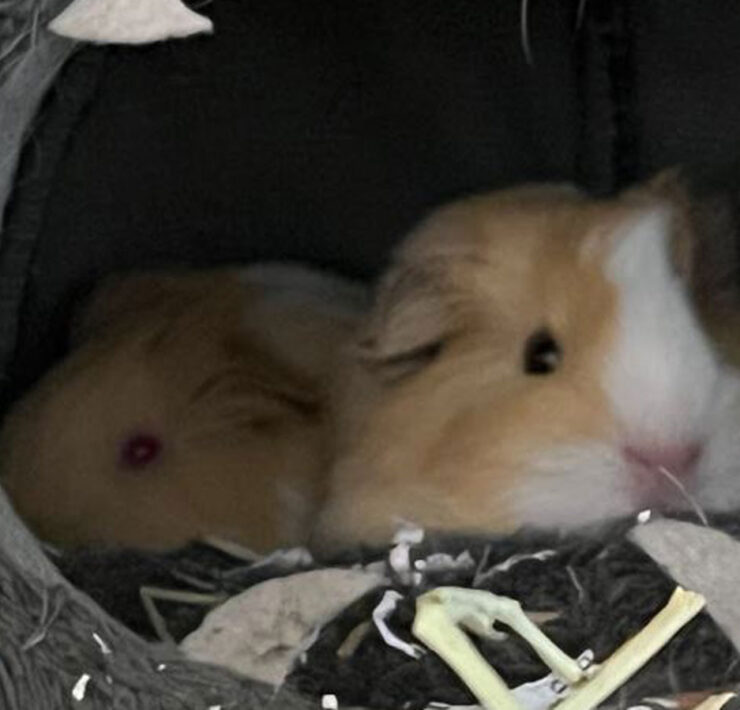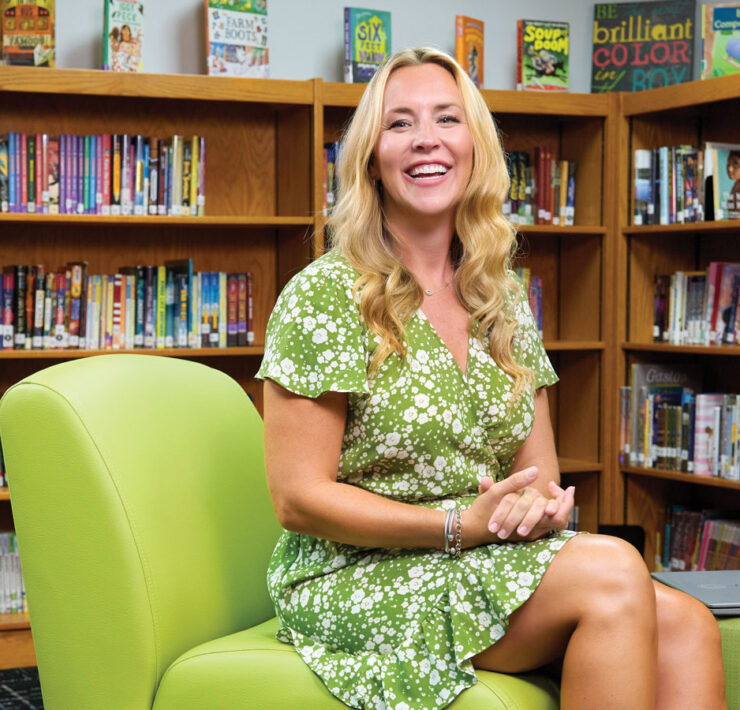3, 2, 1… Lift-Off!
- "3, 2, 1... Lift-Off!" originally appeared in the January 2025 "Health & Wellness" issue of COMO Magazine.

Columbia’s gifted student center has its own Moon Tree.
The year is 1971 when NASA astronaut Stuart Roosa takes tree seeds on Apollo 14. It would be NASA’s third trip to the moon, and the seeds took a ride aboard NASA’s Orion spacecraft.
On board the Orion some fifty-four years ago, Roosa hauled an estimated 1,000 tree seeds. The variants included loblolly pine, sweet gum, redwood, Douglas fir, and sycamore tree seeds. During the next four to six weeks, and after thousands of miles and thirty-four complete lunar orbits, the seeds came back to Earth. Once home, the U.S. Department of Agriculture Forest Services turned the seeds into seedlings.
The seedlings produced trees that in 2022 had seeds of their own, and some took flight back to the Moon on Artemis I. That voyage included seeds for Loblolly pine, American sycamore, sweetgum, Douglas fir, and giant sequoia, all packed into ravioli-like packages. The seeds spent four weeks in space before returning to Earth.
The NASA Office of Engagement and NASA’s Artifact Module has invited schools, universities, and federal agencies to be stewards of the seeds. Seed distributions occurred in the spring and fall of 2024, with others coming up in the spring and fall of 2025. Two of the seeds made it to Missouri — one in Lee’s Summit and the other in Columbia. Columbia received seed number 119, an American Sweetgum.
Representatives from the NASA Office of STEM Engagement came to the EEE Center on October 18, 2024, for a dedication ceremony to officially recognize the center’s Moon tree.
“It’s a big deal that NASA chose us. [We have] high interest in space and science; the kids are really excited about it,” said Elizabeth Brown, the CPS Extended Education Experiences (EEE) gifted program teacher. Brown submitted the application for an Artemis tree seed.
From Seed to Tree to Seeds
With the help of Samuel Wright, a certified arborist, the seed was planted and sprouted at the Eugene Field Center, home to Columbia’s EEE program. The EEE program takes gifted students from twenty-one schools across the Columbia Public Schools system, as well as some private and homeschooled students who meet certain criteria. The gifted students are given a challenging, accelerated program to help foster their growth within the Columbia education system.
Every March, CPS kindergarten and second-grade students take the Naglieri Nonverbal Ability Test (NNAT3). The NNAT3 measures students’ problem-solving skills and measures their aptitude. Students within the 80 percent percentile or higher are eligible for further assessment. With permission from parents or guardians, the students may then take a cognitive exam for further evaluation.
Gifted services are offered to students who meet Missouri state guidelines of the top 3 percentile. If a student meets those criteria, they are eligible for Columbia’s EEE program. Currently, 600 gifted students are educated each year through the EEE program.
More About EEE
Gifted students in Columbia attend the program in trimesters, ranging from ten to twelve weeks. Students attend the EEE one day a week and start their day in their “homeroom” for about an hour. Then students go to their major course, which will take place three times a year.
Kristen Palmer, director of Elementary Gifted Services, said the EEE program has nine teachers who write their own curriculum and create the courses. Students get the chance to vote on their favorite pick. Some past and present major courses are Legos Sparo Edition, Traveling Through Dimensions, Chasing Vermeer, Latin, Puppetry, Wolves North American, and African Animals.
“We try to cover a little bit of everything so they can focus on what they like, or try different things,” said Palmer.
The program gives gifted students a way to excel within the public school system. However, Brown said, there are still myths surrounding gifted students — such as gifted students are elitist or do not need academic help, or that if they have poor grades, they cannot be gifted.
“There is a misconception that gifted kids are always great at school, and I think that puts a lot of pressure on them,” she added.
Many of the students are one to two years ahead of their peers, and their average IQ score is 130, which is the top 2 percent of individuals.
“These are those kids that think outside of that normal range,” said Palmer. With that comes difficulties in the regular classroom, especially since the students are not immune to being neurodivergent.
Brown explained, “Some students whose brains are working overtime, they’re 6 years old, and their IQ is 137, and they don’t quite know how to navigate in the world.”
Regular curriculum could benefit from gifted curriculum as well.
“The problem is regular teachers have so much on their plates,” Brown said. “This staff is really good at helping to be a resource for regular education teachers. With any luck, one day a Columbia Public School student enters space for the first time aboard a NASA flight. Something we need to remember is, ‘At the end of the day they are kids.’”
What’s Next?
What’s next for space flight? In mid-2026, Artemis II is set to launch for a lunar orbit, a ten-day mission around the Moon to prepare for the next mission. In 2027, the Artemis III crew will feature the first woman and a person of color to walk on the Moon.








